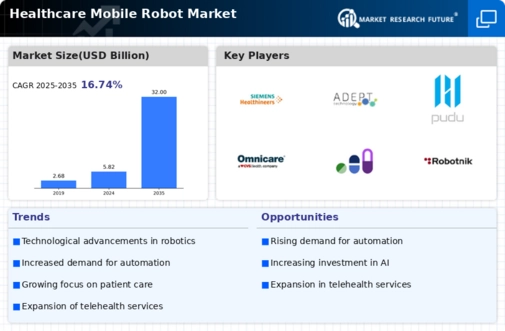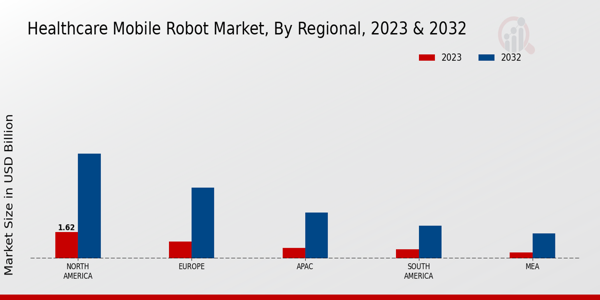The Healthcare Mobile Robot Market is gaining traction as technological advancements and the demand for efficiency in healthcare delivery continue to rise. The competitive landscape of this market is marked by innovation, investment in research and development, and strategic collaborations among varying entities. Companies are striving to differentiate themselves through unique product offerings, improved functionality, and enhanced patient outcomes.
Key competitors are focusing on automation and robotics technology, which can lead to improved surgical precision, reduced recovery time, and increased operational effectiveness within hospitals and healthcare facilities. As the market expands, new players emerge alongside established firms, all vying for a share of the growing demand for mobile robotics in healthcare settings.Intuitive Surgical stands out in the Healthcare Mobile Robot Market due to its robust portfolio of surgical systems that leverage robotic assistance to enhance surgical techniques.
Renowned for its da Vinci Surgical System, Intuitive Surgical has carved a significant niche by focusing on minimally invasive surgeries that result in better patient outcomes and shorter recovery times. The company's commitment to innovation is evident through continuous upgrades and enhancements to its robotic platforms, allowing surgeons to perform complex procedures with higher precision. Intuitive Surgical benefits from a strong brand reputation and established relationships with healthcare professionals, which fuel its market presence.
Its extensive training programs ensure that surgeons are proficient with its systems, further reinforcing Intuitive Surgical's position in this competitive landscape.Siemens Healthineers is another prominent player in the Healthcare Mobile Robot Market, known for its advanced imaging and diagnostic capabilities.
As part of its expansion into mobile robotic systems, Siemens Healthineers focuses on integrating robotics with imaging technology to optimize workflows and enhance patient care. The company leverages its extensive expertise in healthcare technology to develop solutions that streamline operations and reduce procedural times. Their approach includes emphasizing the importance of interoperability, which allows seamless integration of mobile robotic solutions into existing healthcare systems.
Siemens Healthineers consistently invests in research and development to stay ahead of the curve, offering innovative products that align with current and future healthcare demands. By delivering high-quality, reliable mobile robotics solutions, Siemens Healthineers effectively utilizes its strong industry presence to cater to the evolving needs of the healthcare sector.





















